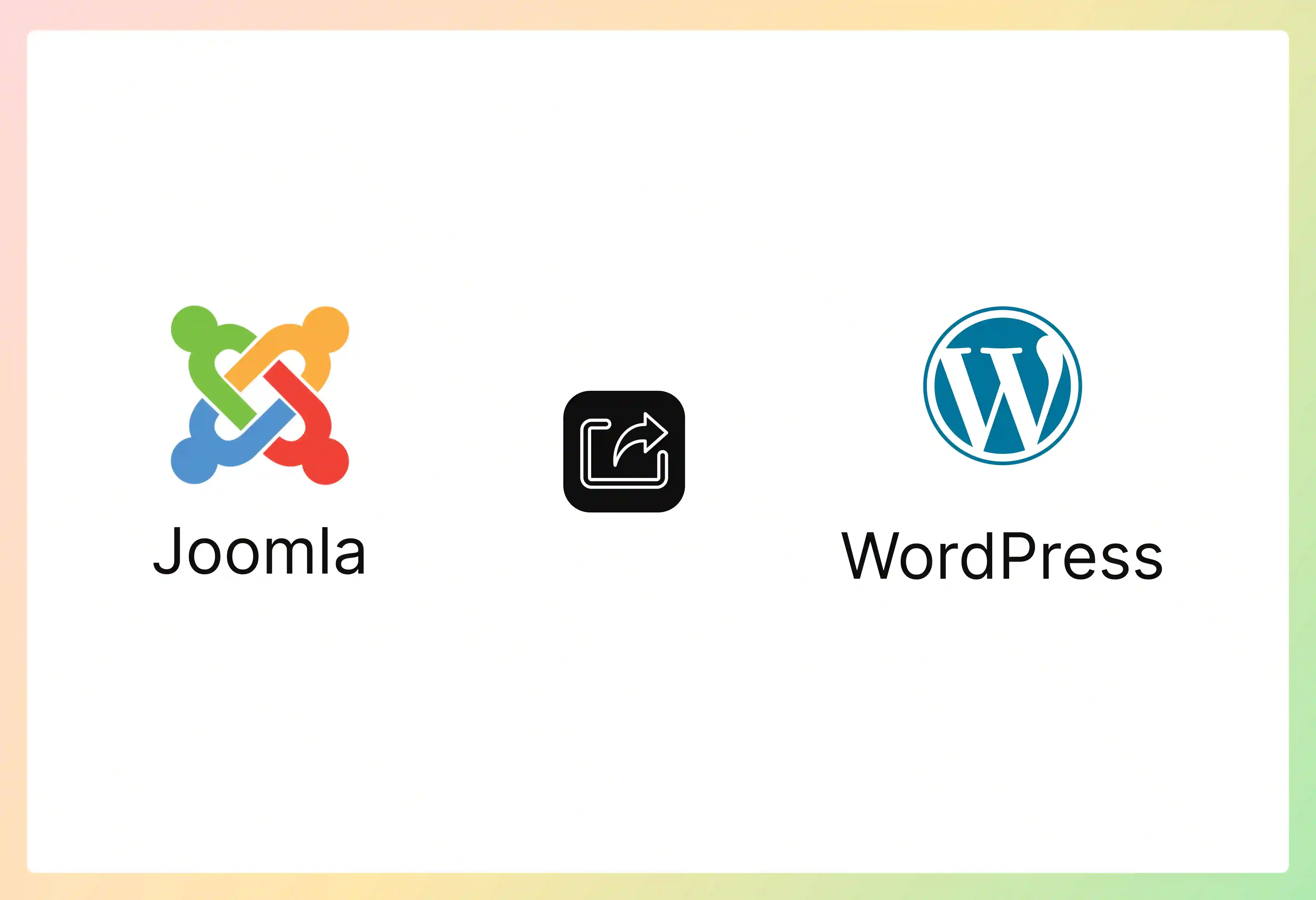


Joomla is 4th widely deployed Content Management system (CMS) which is used to build, organise and manage websites by nearly 2 million active users. However due to its non- user-friendliness and other certain disadvantages migrating to simpler CMS platform like WordPress would be fruitful and productive for the users.
This article explains the exact steps we need to follow for smooth migration of your website from Joomla to WordPress.
Joomla and WordPress are two of the most popular Content Management Systems (CMS). With each having their own distinct features and purposes like Joomla was supposed to be used for web portals and WordPress was intended for Blogging, WordPress spikes up in the race due to its advantages.
Let us first know about the disadvantages of Joomla and why people are migrating to another CMS platform
Whereas WordPress has more perks like
So with all the advantages of WordPress, it increases the growth and expansion we can consider migrating to WordPress from Joomla site.
Before migrating any data from Joomla to WordPress we need to follow the three key phases of data migration which are Planning, perfect Execution and verification. Planning includes initial setups, execution includes importing the data without errors and verification means do a functionality checking.
Ensure that you have access to Joomla database credentials like hostname, database name, username, and password and table prefix.
Domain name is basically what people type to go our site and use. It should be clear and concise. Select and decide a precise domain name.
Hosting company stores all your sites’ files, images and data. So we should choose a hosting provider which has high uptime, performance, and price and user friendly control panel.
WordPress offers several themes for all types of websites. Having many predefined layouts, colours and styles we can give a new appearance to website. But we should also remember that WordPress supports only one active theme.
Plugins are basically used to add extra features and functionalities to your site like ecommerce tools, SEO tools, etc. We must do extra research and decide which plugins to be used.
Before we start do transfer a complete check need to be done on Joomla site’s content (pages, posts, images, etc.)
Convert Joomla to WordPress using the below easy steps
It is always recommended to create a complete backup of Joomla site. Doing this will ensure that no data is lost while we encounter issues during conversion.
Always document current websites settings, configurations that need to be reproduced.
With its easy installation process, install stable WordPress version with a domain name and web hosting provider. Do take up a backup of WordPress website if you already have
WordPress does not support Joomla migration and it needs FG Joomla to WordPress migration plugin. With the help of this plugin we can easily migrate all of our Joomla site’s sections, categories, posts and media to WordPress.
Log in to your WordPress dashboard 🡪 navigate to Plugins 🡪 Select Add New 🡪 Then search for FG Joomla to WordPress plugin and click 🡪 Install Now 🡪 Activate.
Go to Tools 🡪 Click on Import 🡪 Go to Joomla (FG) 🡪 select Run Importer
Now go to Migration section. This section allows users to choose how to the plugin should work
An empty website may contain sample web pages and default categories. Wipe your WordPress website and import your Joomla’s content on a fresh one.
Select Remove All WordPress content🡪 click on Empty WordPress content, ensure that the plugin wipes all the data
Now with all the pre check done we can start the migration process from Joomla to WordPress.
We need to enter the Joomla database parameters without which WordPress does not allow its FG Joomla to WordPress plugin to launch the import. To do this follow the below steps
Move onto WordPress dashboard and go to Behaviour section. This section contains the necessary settings to manage your import process and gives us to decide what all should we migrate and what to be ignored including Import introtext , archived posts, archived categories ,unpublished categories Media, Meta keywords, create pages.
Click on save settings and now click on /Resume the import. The FG Joomla to WordPress plugin will start importing the data and keep us informed once it is done by throwing a success message “Import Completed”.
At this stage we should look at the imported pages, posts and media files and be sure that all data from Joomla site has been imported successfully to WordPress.
Sometimes there might be a chance that the internal links get broken down with the page and the appearance gets shattered. Broken links impacts page’s SEO operations also. To overcome this FG Joomla to WordPress plugin gives the solution.
Go to Tools🡪 Import🡪 and select Run importer below Joomla (FG).
Go to after the migration and click on Modify internal links, the plugin will scan and get us the results. If any broken links is found we can fix it away here.
Permalinks are the URLS that lead users from Search Engine Result pages (SERP) to your pages and posts. Afterwards also we can change your permalinks but after migration it is better in order to prevent broken links. WordPress offers six different permalinks structures and we can check this by going to Settings 🡪 Permalinks. Select the permalinks or let the default permalinks structure and click on save button.
Last step is to repoint your domain name of Joomla site to new WordPress site. This brings the users to WordPress whenever they do a search instead of Joomla.
Now we should validate the key functionalities of newly migrated website before making it live. We should ensure that all the things like installed plugins, interactive feature, and page loading speed works correctly. We can customise by installing a new theme to give a new look.
Usually any migration marks the beginning of new optimization and growth and so does the conversion of Joomla site to WordPress. Below key points needs check listed
The Future of your data starts now!
Joomla to WordPress migration requires technical expertise and planning strategy.
At Entrans we migrate with security, confidence and reliability with the help of comprehensive solutions with a proven track record. Entrans supports teams from planning to post migration of Joomla site to WordPress. Having worked with 60+ clients we focus on smooth transition and effortless data transfer from Joomla to WordPress.
If you're ready to migrate from Joomla to Wordpress, Entrans is here to help. Contact us today to discuss your needs and how we can assist in your migration journey.





